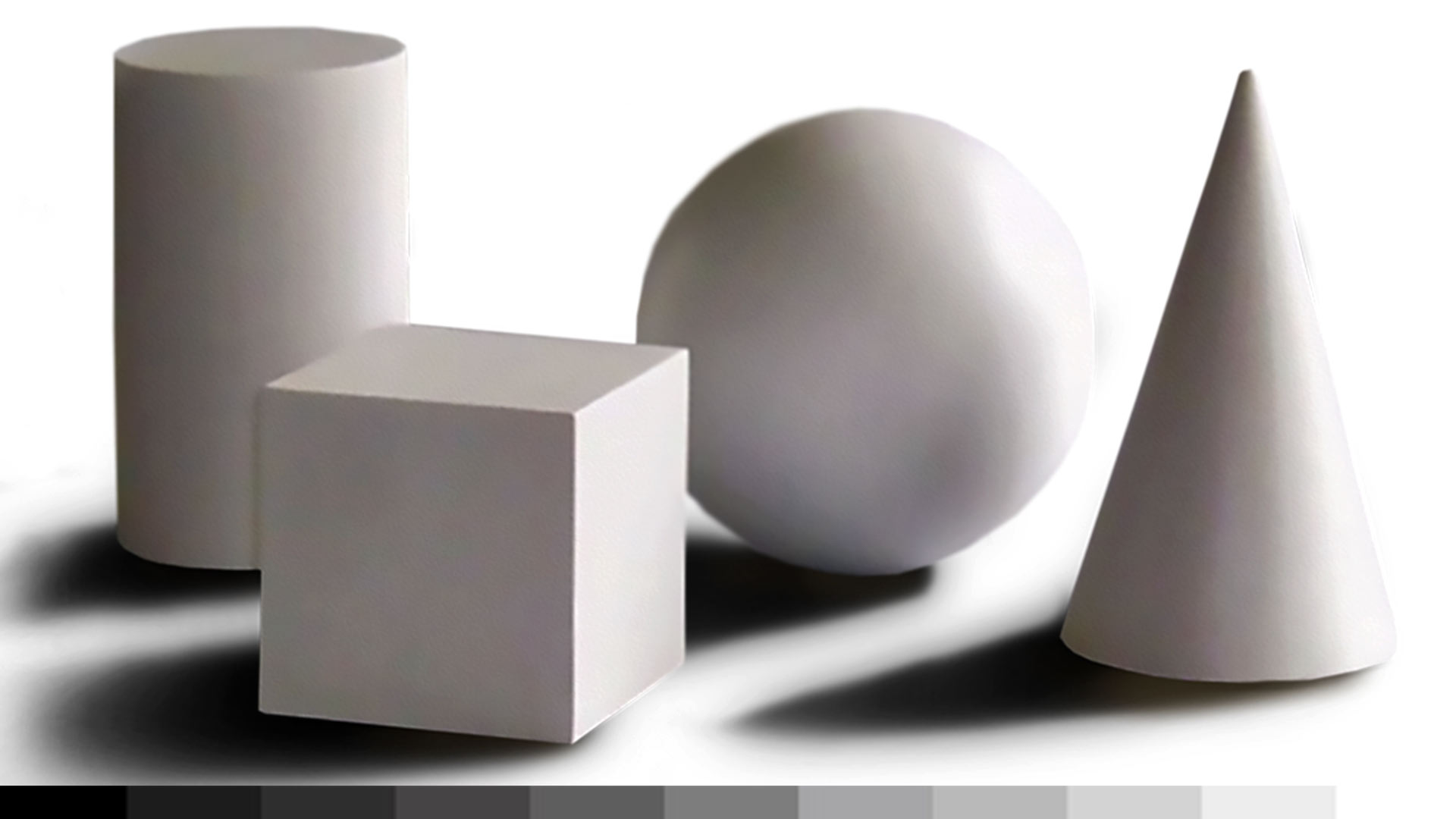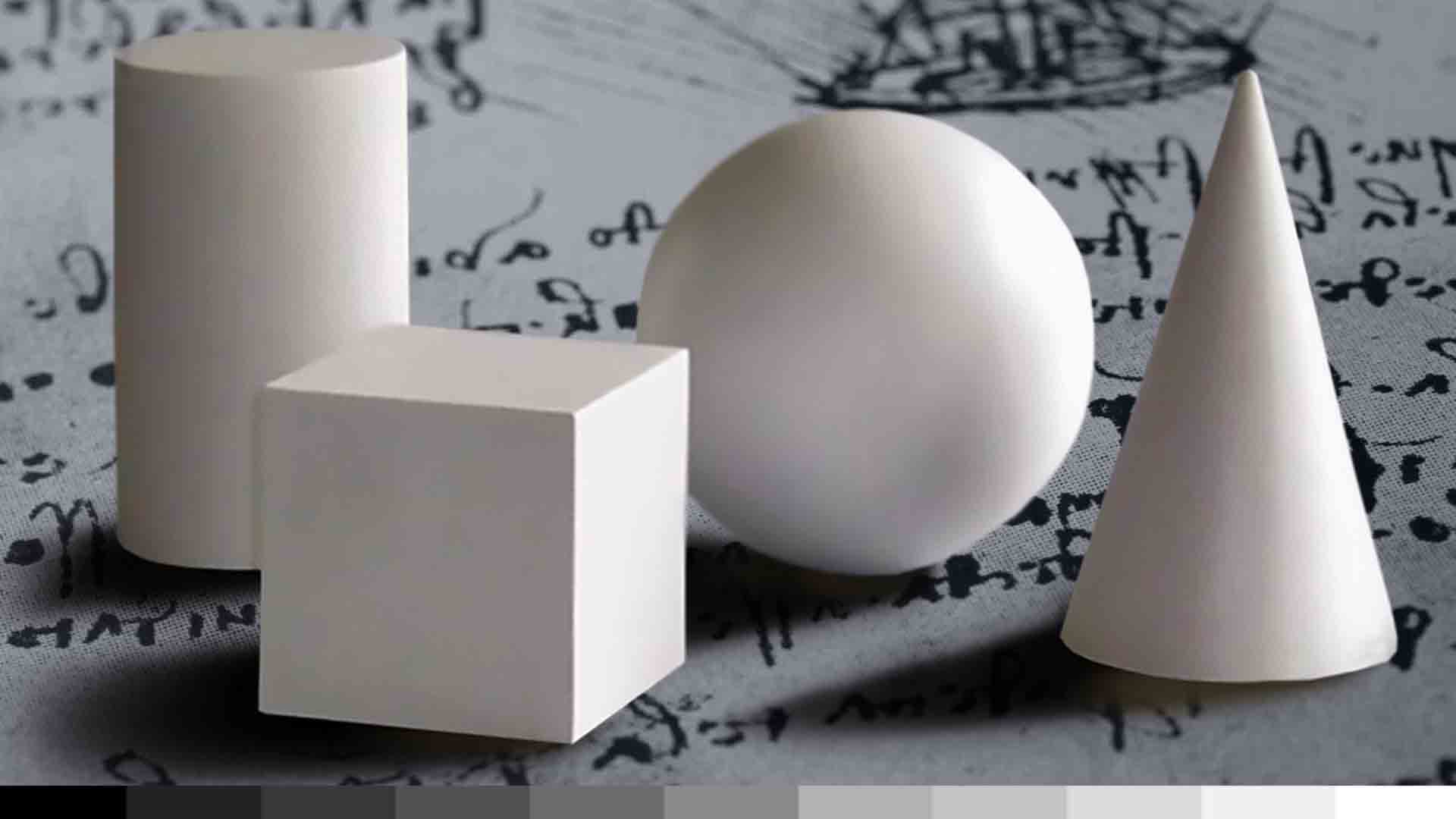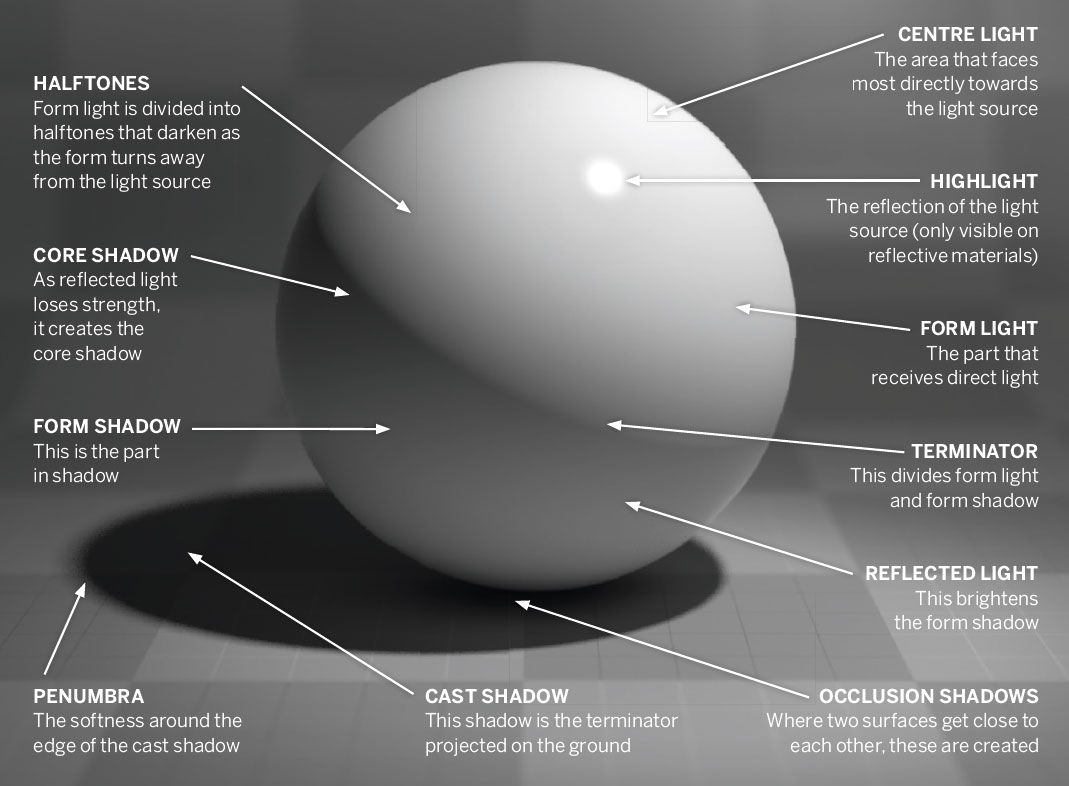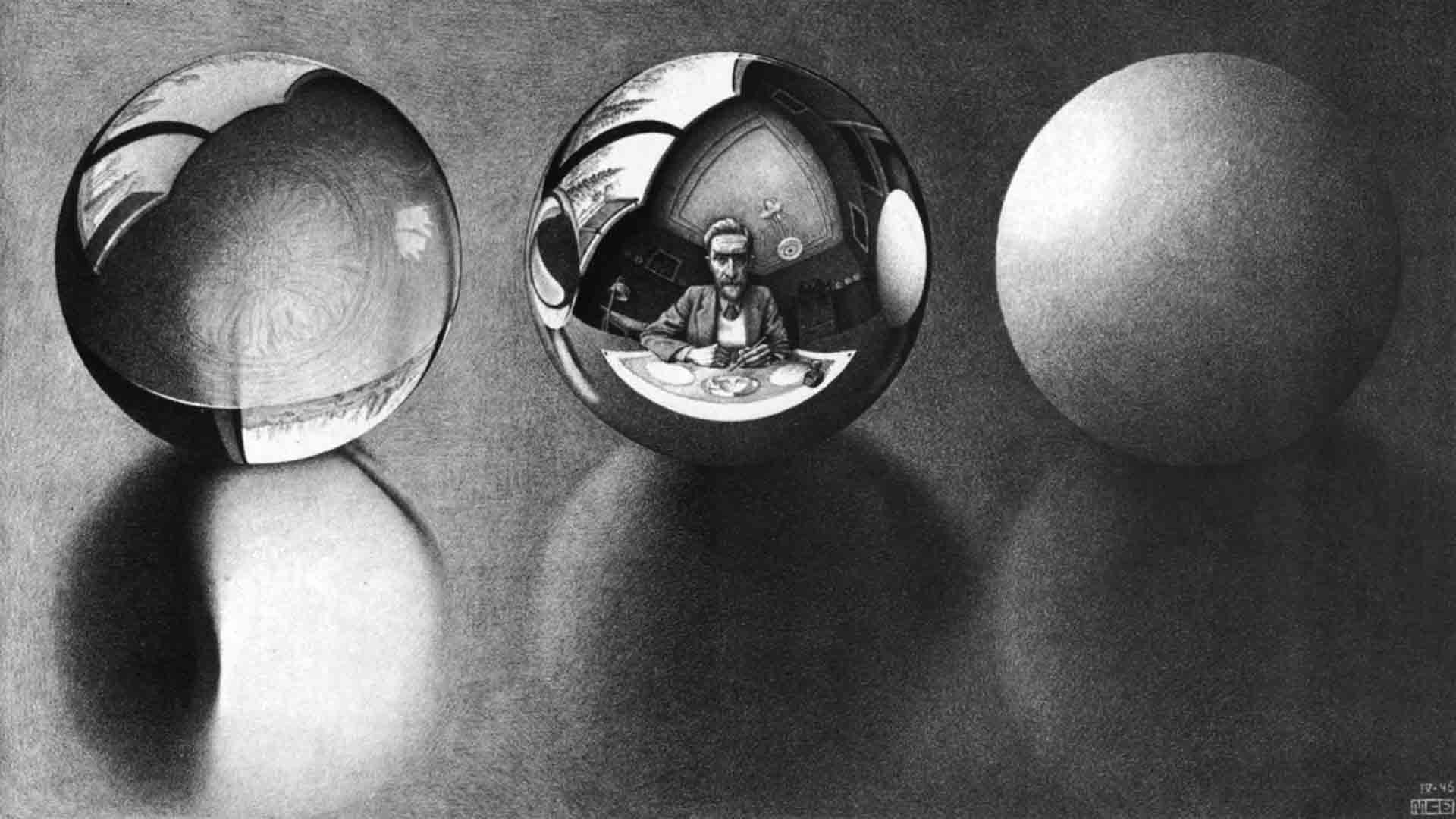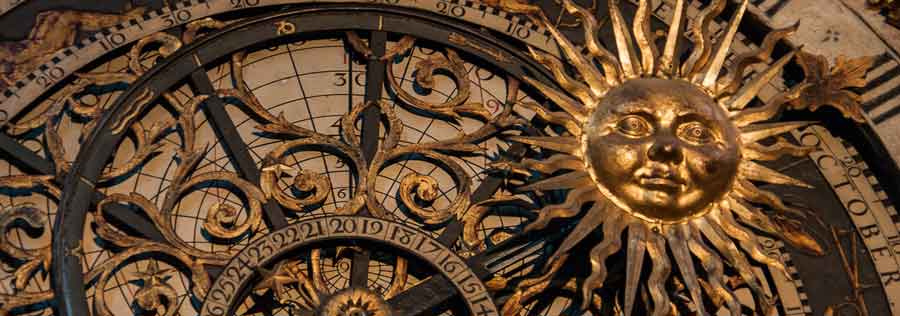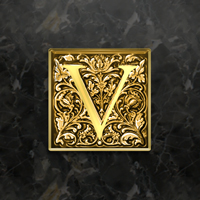Value
See highlights and high-quality resources for advanced investigations.
Value (an element of visual art and design)
is the degree of lightness and darkness in a color (or white to black).
The difference in values is called contrast.
...can relate to shades ...adding black
or tints...adding white...
—

Value at
oogle Arts & Culture
Cover Value: 7 Elements of Art —Lillian Gray
Value Scale
Value Scale - Art Vocab Definition (0:17): Philinthecircle
The scale in the video shows a full spectrum of solid and blended values from 0 - 10 with 0 being solid black.
IMPORTANT: In this class, white is considered the lightest value (0) and black is the darkest (9), which is the limit for the type of graphite pencil required. (Ebony or 7 - 9B). The middle value between these extremes is also known as a half-tone, all of which can be found on a value scale in the image below.

Key Values
"Key" Values (0:20)
refers to the lightness or darkness on a value scale. High-Key values are very light and low-key are very dark. Avoid the first three key examples below (high, middle or low)! If your goal is to draw more realistic, a * Full Value Spectrum is ideal.
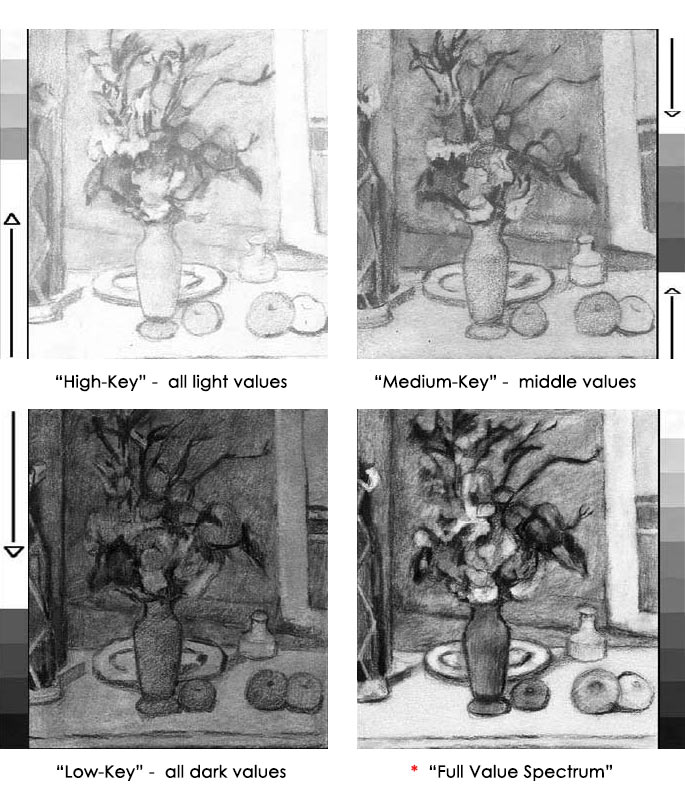
Low Contrast (0:16) (high-key and low-key) is when there is a small difference between the light and dark areas in an artwork. (Avoid this!)
*High Contrast (0:20) is when there is a large difference between
the light and dark areas in an artwork. *(Ideal and balanced!!)
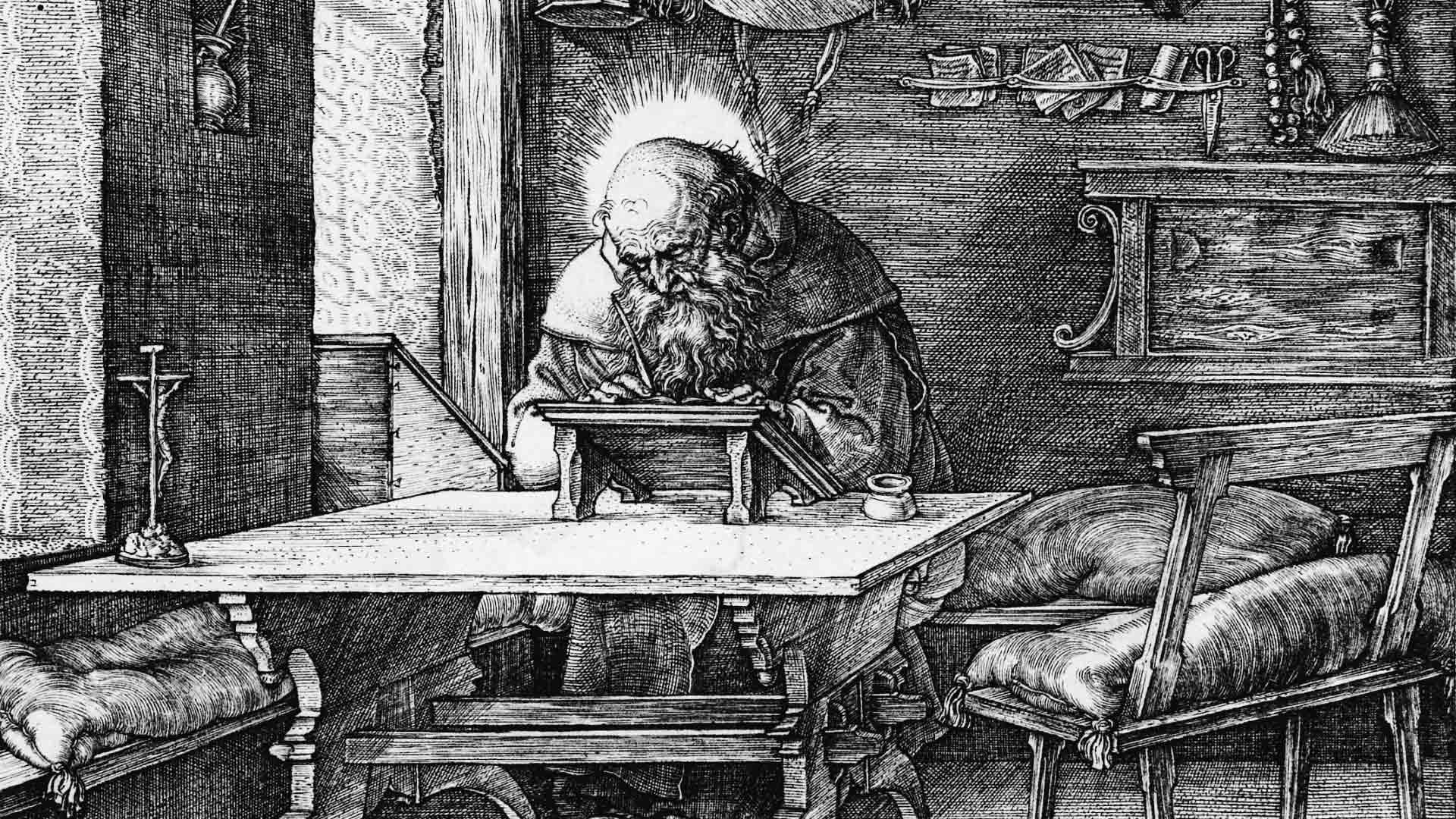
Value
Line & Texture
